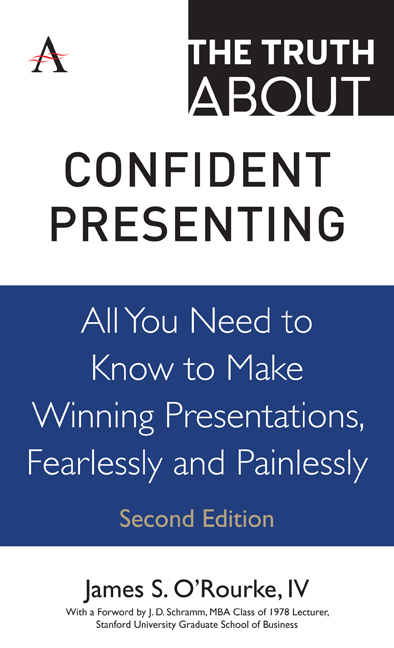 The Truth about Confident Presenting
The Truth about Confident Presenting Book contents
- Frontmatter
- Contents
- Foreword
- Introduction
- Part I Some Initial Truths
- Part II The Truth About Getting Ready to Speak
- Part III The Truth About What Makes People Listen
- Part IV The Truth About Developing Support for Your Presentation
- Part V The Truth About Getting Up to Speak
- Part VI The Truth About Managing Anxiety
- Part VII The Truth About Nonverbal Communication
- Part VIII The Truth About Visual Aids
- Part IX The Truth About Handling an Audience
- Truth 46 Assess the mood of your audience
- Truth 47 Answer the audience's questions
- Truth 48 Handle hostility with confidence
- Part X The Truth About What Makes a Presentation Work
- References
- Acknowledgments
- About the Author
Truth 47 - Answer the audience's questions
from Part IX - The Truth About Handling an Audience
- Frontmatter
- Contents
- Foreword
- Introduction
- Part I Some Initial Truths
- Part II The Truth About Getting Ready to Speak
- Part III The Truth About What Makes People Listen
- Part IV The Truth About Developing Support for Your Presentation
- Part V The Truth About Getting Up to Speak
- Part VI The Truth About Managing Anxiety
- Part VII The Truth About Nonverbal Communication
- Part VIII The Truth About Visual Aids
- Part IX The Truth About Handling an Audience
- Truth 46 Assess the mood of your audience
- Truth 47 Answer the audience's questions
- Truth 48 Handle hostility with confidence
- Part X The Truth About What Makes a Presentation Work
- References
- Acknowledgments
- About the Author
Summary
Sometimes audience members are not permitted to ask questions. In that case, your task is to anticipate their concerns and deal with them in your prepared remarks. If the format of your presentation allows for questions following your talk, then you should prepare for that. Here's the truth about handling questions:
■ Listen to the question. Patiently listen to the entire question and focus on both the content of the question and the reason it's being asked. Don't interrupt the questioner, even if you're pretty sure you know where the question is heading. Listen to all of it, thoughtfully, then reply.
■ Pause to think about your answer. If you step on the end of a question with a canned response, the audience will know it. Don't be so eager to reply that your answer sounds scripted. Try your best to create the impression that you are responding to this question from this audience member and, if possible, personalize your reply.
■ Don't repeat the question. If the questioner doesn't have access to a microphone and others in the audience cannot hear the question, go ahead and repeat it. Otherwise, just think about the question and formulate a reply that addresses the issue that was raised.
■ Don't drift off topic. Answer only the question that's been asked and make your reply as specific as possible. On the other hand, the conventional advice to politicians and public spokesmen is, “If someone asks you a question that you cannot answer, then answer a question you wished they had asked.” The floor is still yours and you should focus on issues that are important to you and your reasons for being there, but remember that the questioner still deserves a straightforward, honest response to the question.
■ Address the whole audience. The question-a nd-a nswer 47 period is not the time to begin a personal conversation with one individual in the audience. Try to address your reply to the whole audience, not just the questioner. That way, they'll all still feel included.
■ Answer it completely. Stay with the question until you know you answer it fully. That means putting yourself in the shoes of the audience member who was brave enough to get up and ask you a question. Try to understand what motivated the question and how they feel about the subject.
- Type
- Chapter
- Information
- The Truth about Confident PresentingAll You Need To Know To Make Winning Presentations, Fearlessly And Painlessly, pp. 187 - 190Publisher: Anthem PressPrint publication year: 2019
